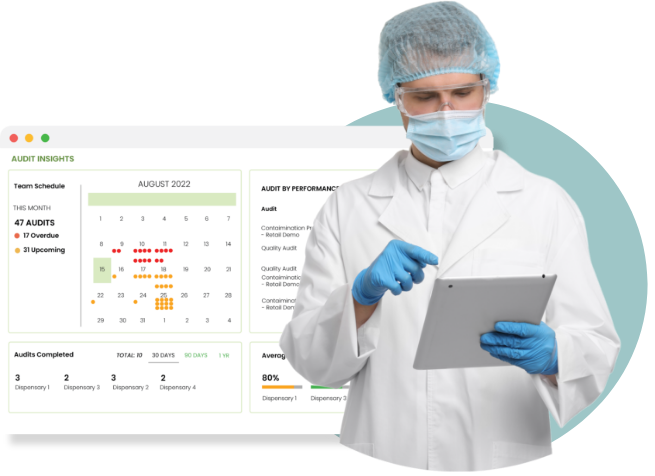Author: Ben Hartman | July 23, 2024 | 3 Min Read
Why Risk Analysis and a Hands-On Approach from Management are Key to Food Safety

A hands-on, preventive approach is far better than just waiting and reacting when it comes to product safety in food manufacturing, according to Brooke Rehberg the Director of Administration and Quality Assurance at Homeland Baking.
Speaking to Rootwurks last week, Rehberg said that once an hour she, the Director of Logistics, the Director of Operations, and even sometimes the owners walk the production floor checking quality and measurements to ensure everything looks like it should.
“It’s also to see if employees are struggling with anything that could affect the process. You take a kind of hands-on approach to preventing issues rather than waiting for them to happen.”
She added that this approach to safety and quality assurance “has to do with a lot of management and leadership eyes on the floor, not just trusting that everything is the way it should be.”
Homeland Baking is based out of a production facility in Claremore, Oklahoma. The company produces Mitchell’s Sausage Rolls, packaged pre-cooked sausage rolls wrapped in bread that are sold directly to consumers in convenience stores across the country, as well as in Costco and the grocery store chain Reasors. A little over half of the company’s business is in co-manufacturing for other brands. The company is in the process of launching several products under the Mitchell’s Sausage Rolls brand and a number of new co-manufacturing opportunities, Rehberg said.
Rehberg said that the company is family-owned and operated and currently has less than 35 employees but hopes to double that number over the next year. Over the past six years since father-in-law and son-in-law Chris and Greg Reynolds bought the company, they have greatly expanded production from 5 to 6 batches on 2 to 3 days a week to five days a week and 30 to 40 batches per day.
When asked to name some of the bigger safety issues the company faces, Rehberg mentioned temperature control.
“Temperature control is a really big one when you distribute food nationally. Customers have the expectation that their food is perfectly free from anything that’s harmful to them.”
She added that temperature abuse is very common throughout the supply chain so they must do their part as a company to prevent it.
Rehberg said that some food companies “value quantity and output over the quality of what they’re getting and that can lead to safety hazards for workers.”
To train for safety, Rehberg said she believes that whatever tools someone uses, it’s very important to keep things accessible and easy. For employees on the floor, this includes verbal and physical demonstrations of safety measures and the use of PowerPoint presentations.
What about HACCP?
Rehberg also stressed the importance of Hazard Analysis and Critical Control Points (HACCP), a safety management system that has been part of the foundation of food safety for more than 5 decades.
“The role of HACCP in our operations is foundational. In order to appropriately assess and mitigate risk, you have to have the knowledge to do so,” she said.
She also said she considers risk analysis to be the most important step for food safety.
But, as important as HACCP education is, HACCP plans must be updated as needed.
“The thing that many people forget is that you can’t just do your HACCP plan and call it good. For every change you make you have to do a risk analysis,” Rehberg said, adding “you have to think about it and analyze what the risks are because there’s risks with everything and the more we can mitigate the better.”
Rehberg said that as a company, they see the importance of instilling a strong food safety culture, which she said is “foundational and can’t come in later, it has to be one of the very first things to do.”
She also said that it's important to lump food safety and quality together.
“I don't think you can separate operations from food safety and quality. I like to say they’re best friends.”
She added “if it’s not abiding by the quality and safety guidelines, it's not going to be a sound decision. So everything really has to synergize to work together and it takes a lot of people and a lot of communication.”
To learn more about the Rootwurks Basic HACCP certification course, click here or on the image below:
Contributors

Ben Hartman
From HACCP certification to the basics of hygiene, our on-demand courseware has you covered.


.jpg?width=1200&height=628&name=HACCP%20Course%20Social%20Media%20Campaigns_B%20(3).jpg)



.jpg?width=120&height=80&name=Baby%20(1).jpg)

